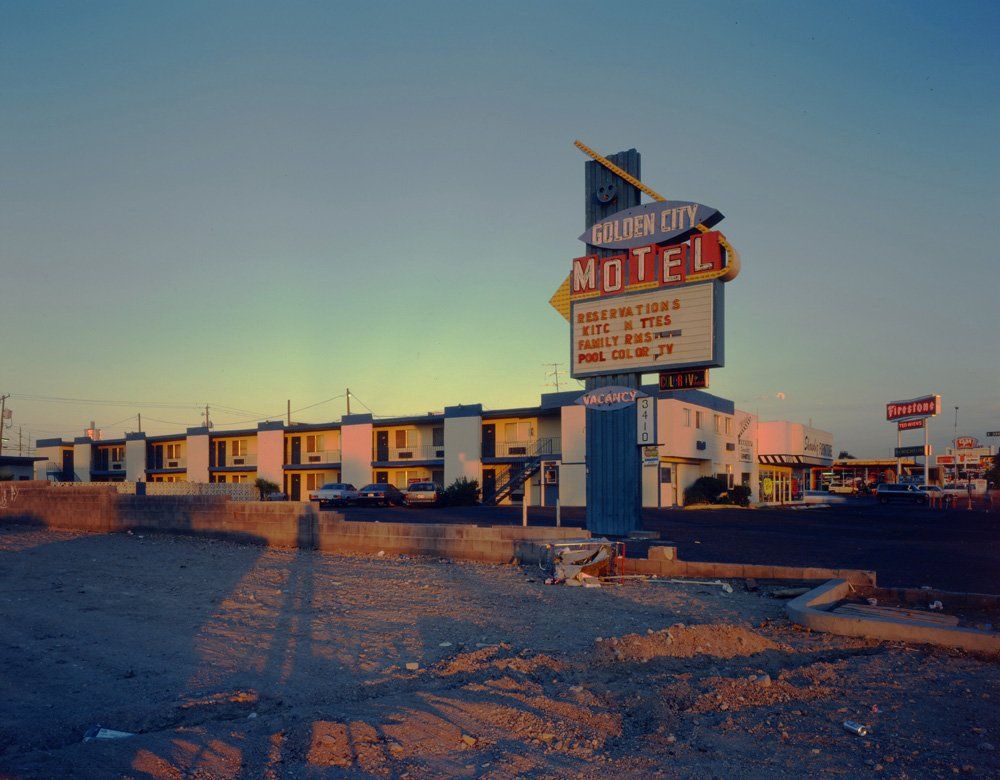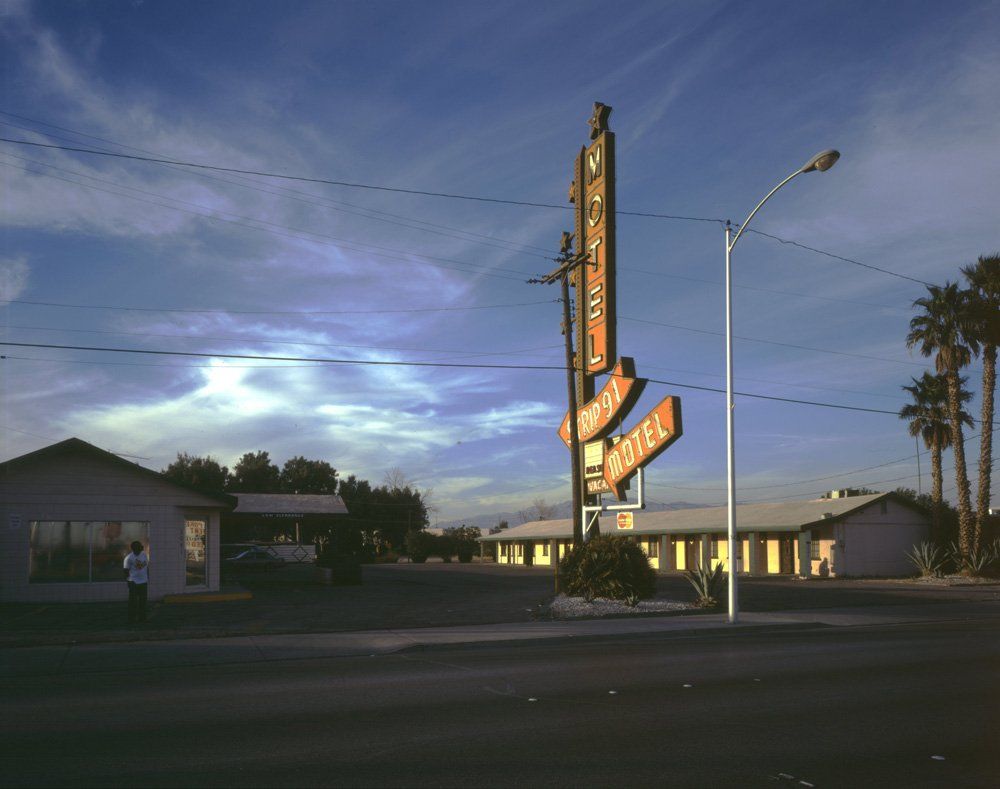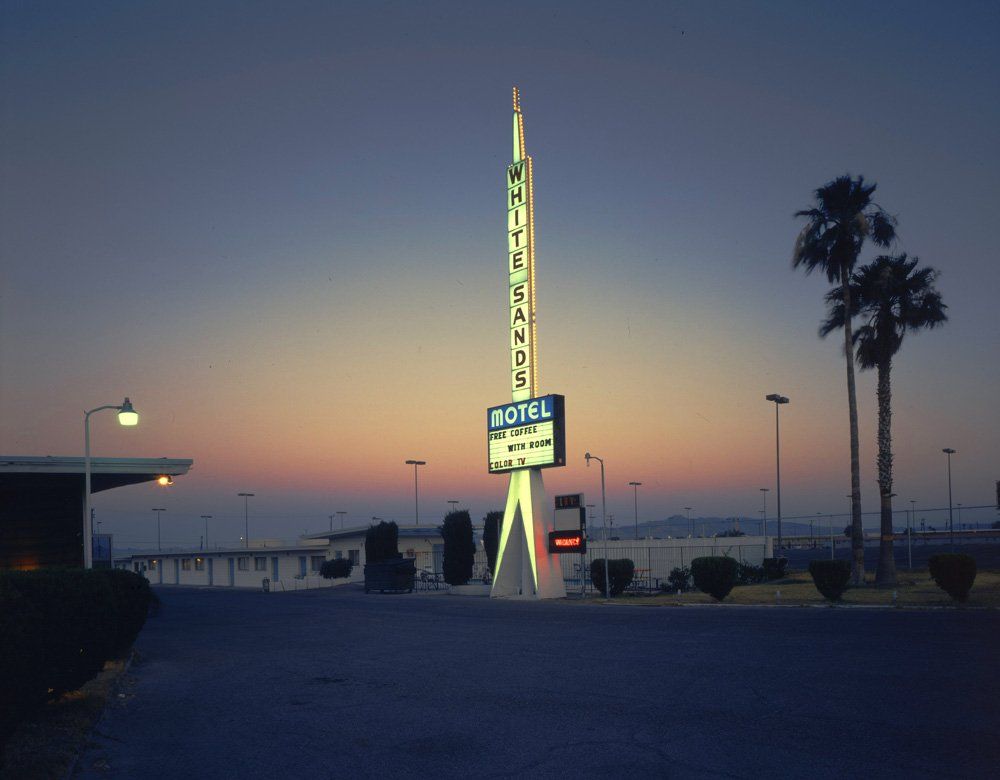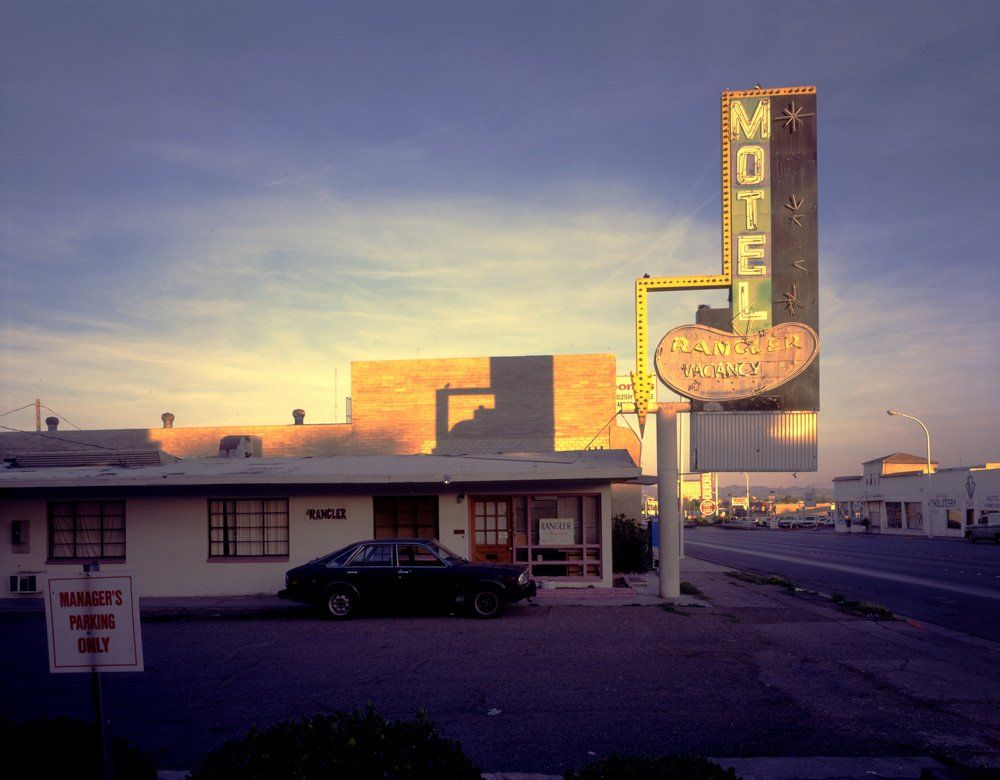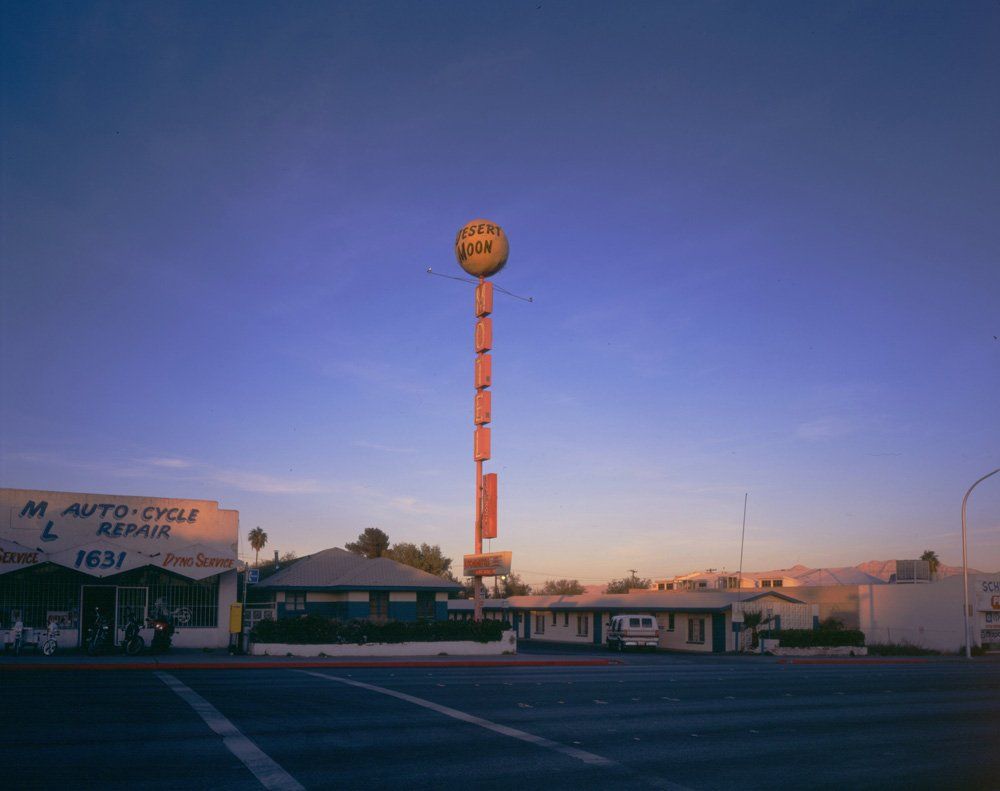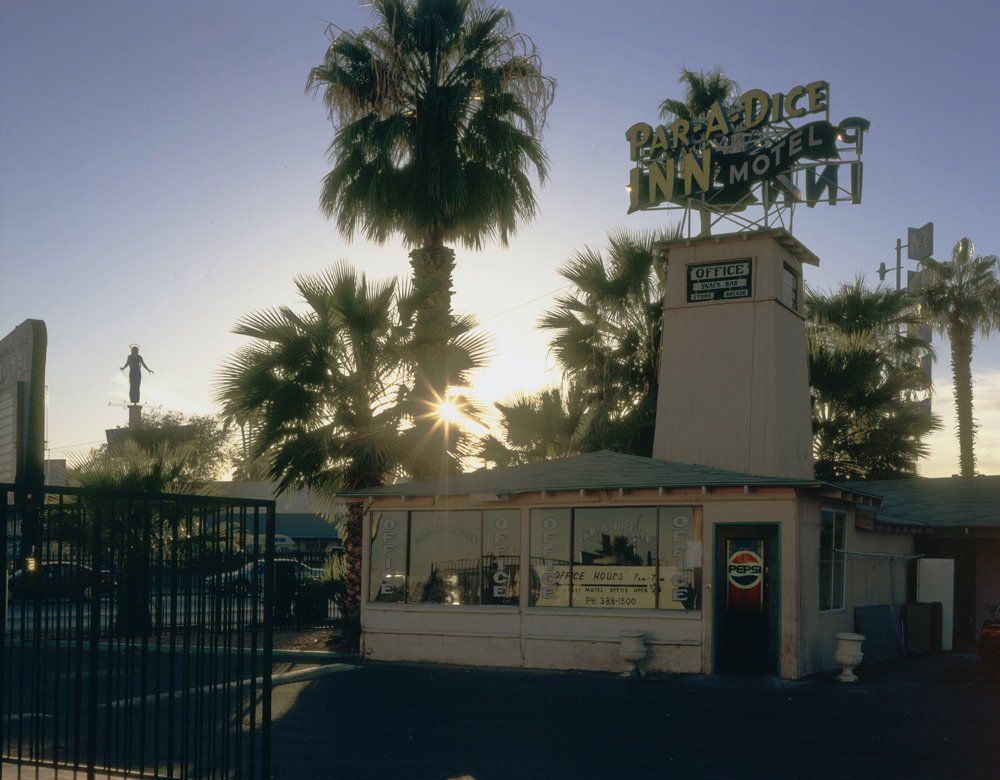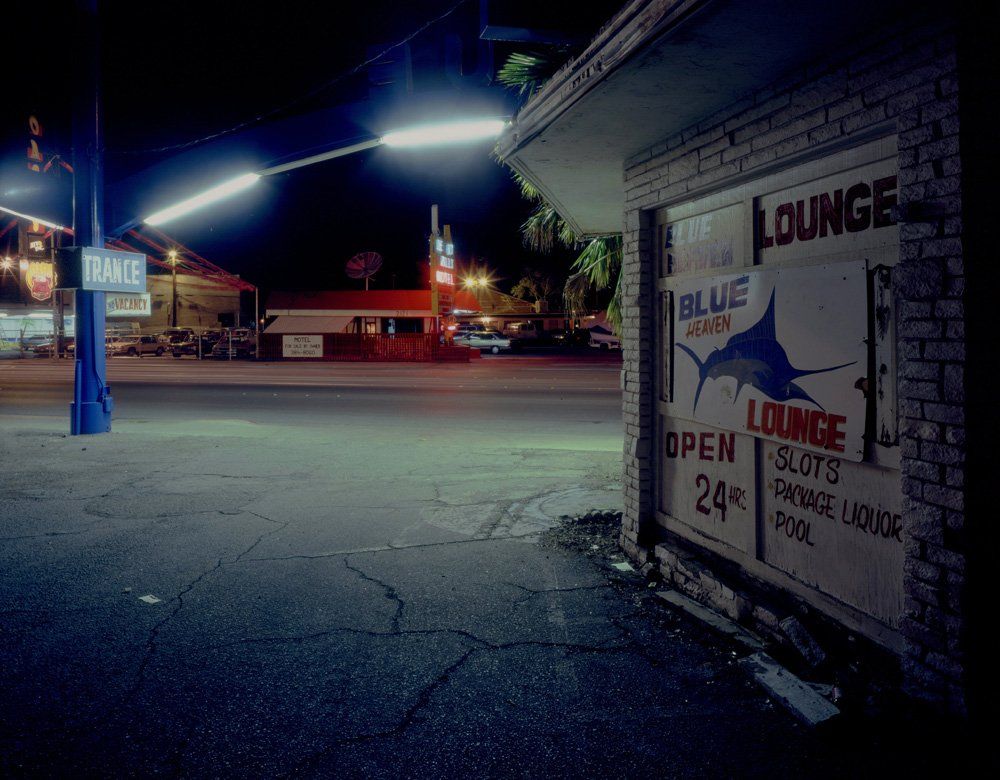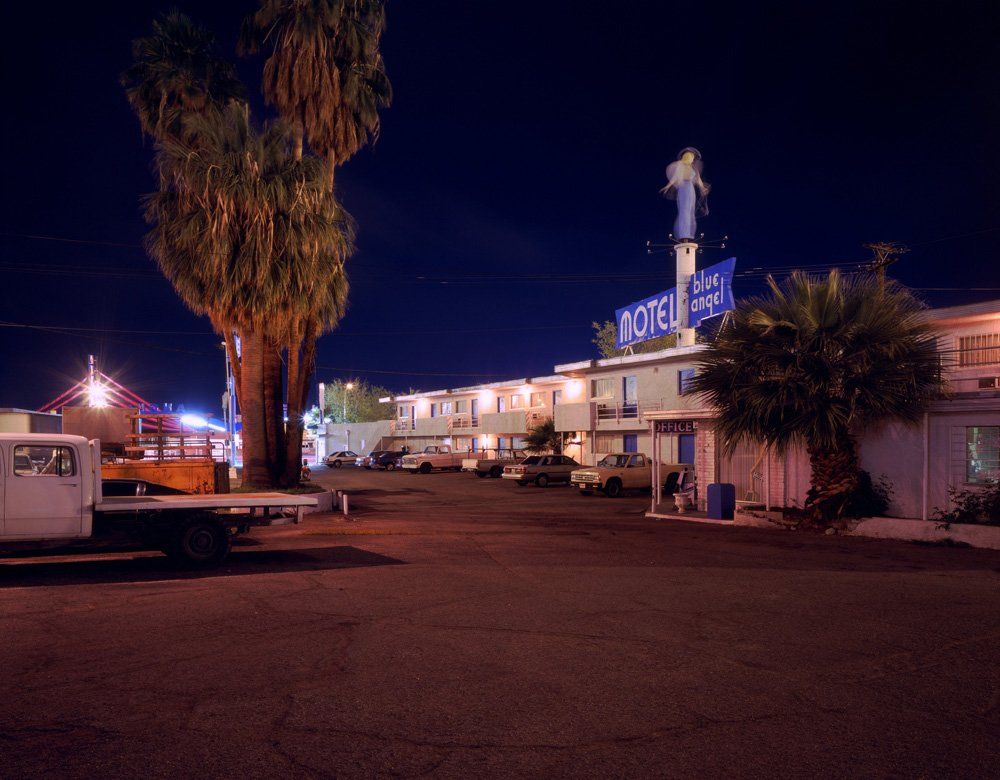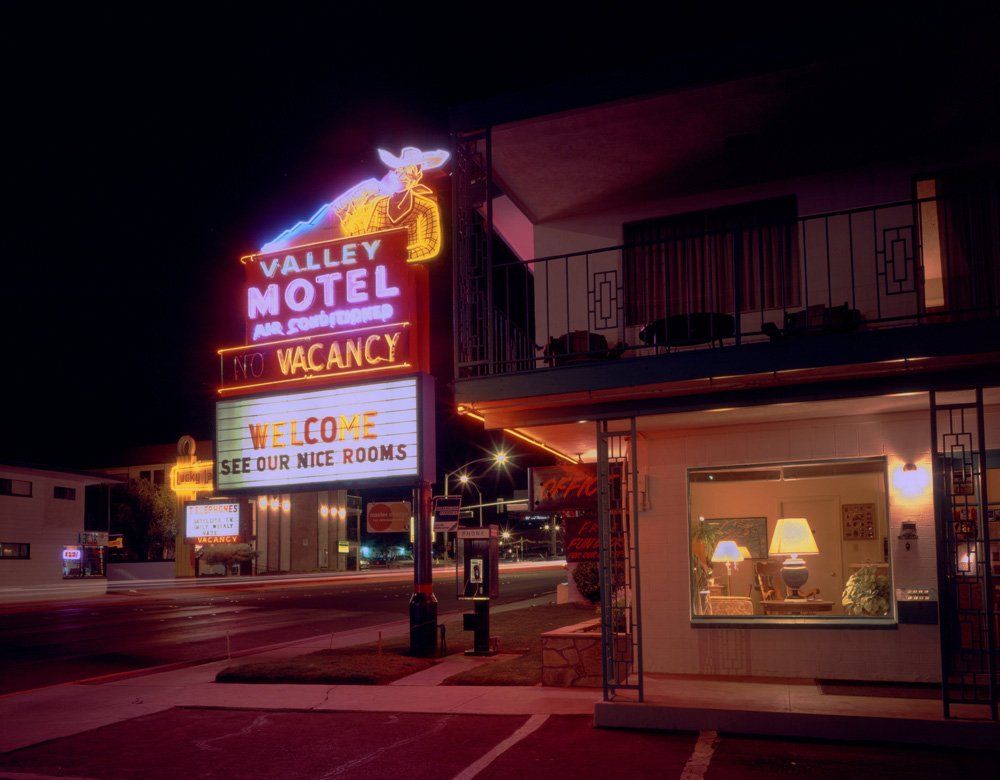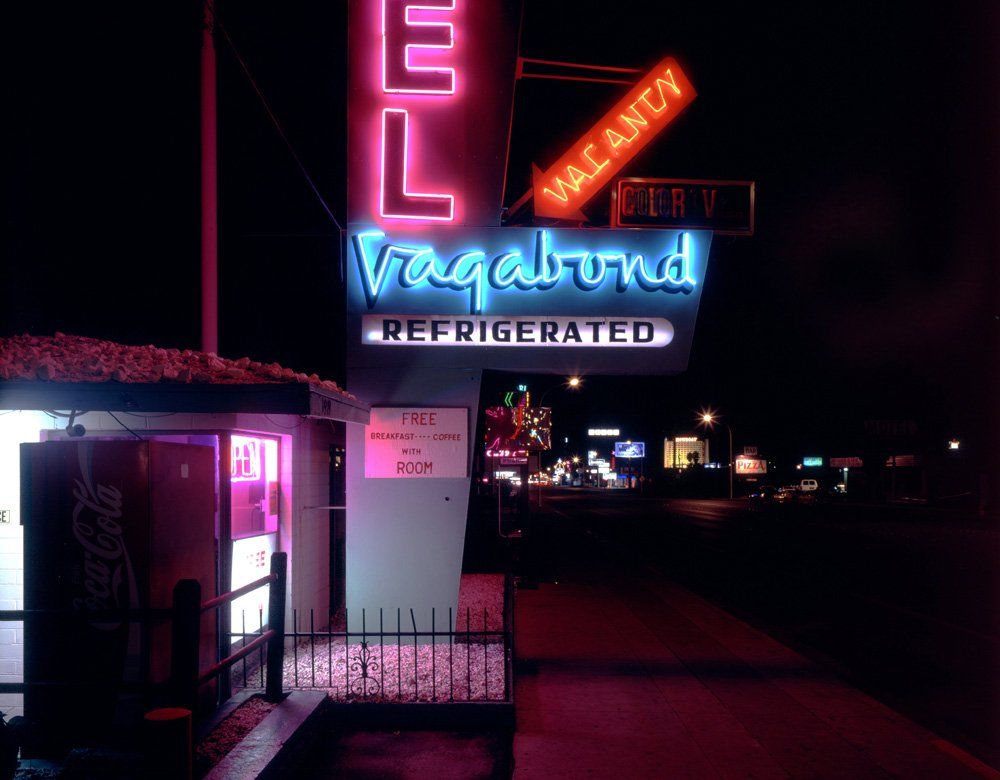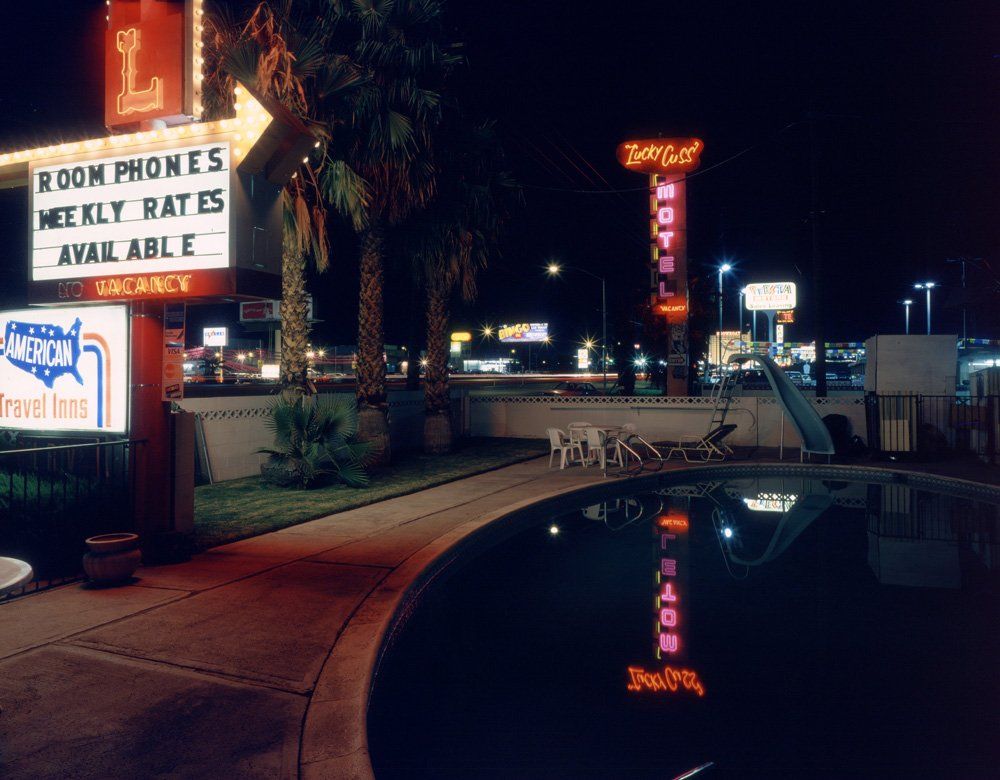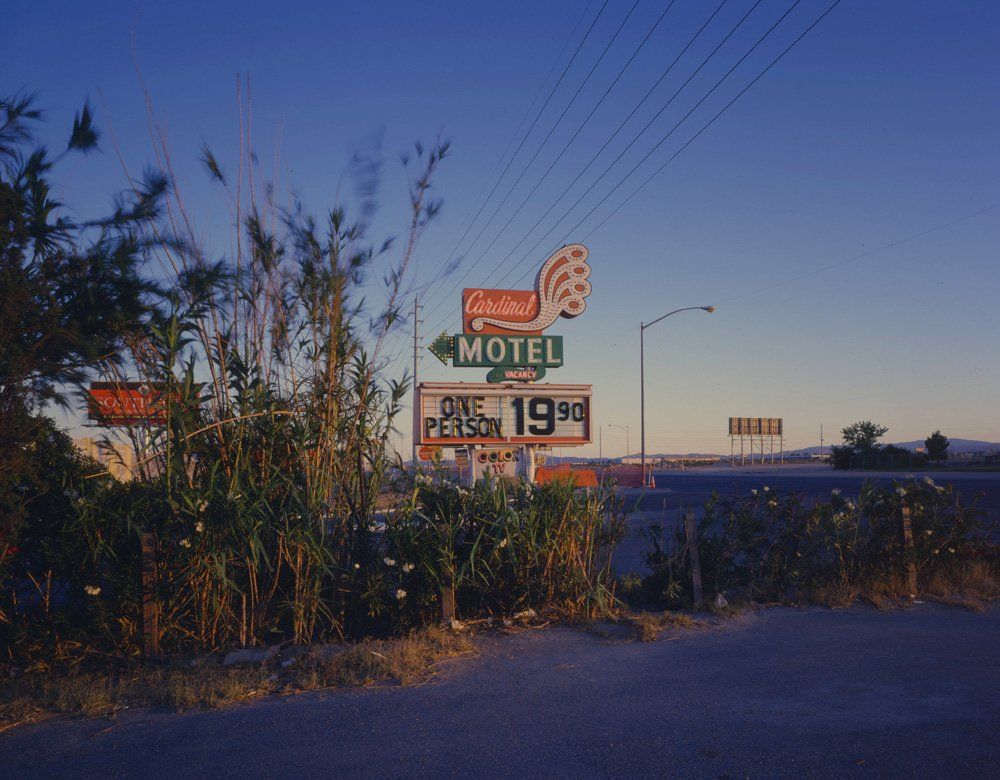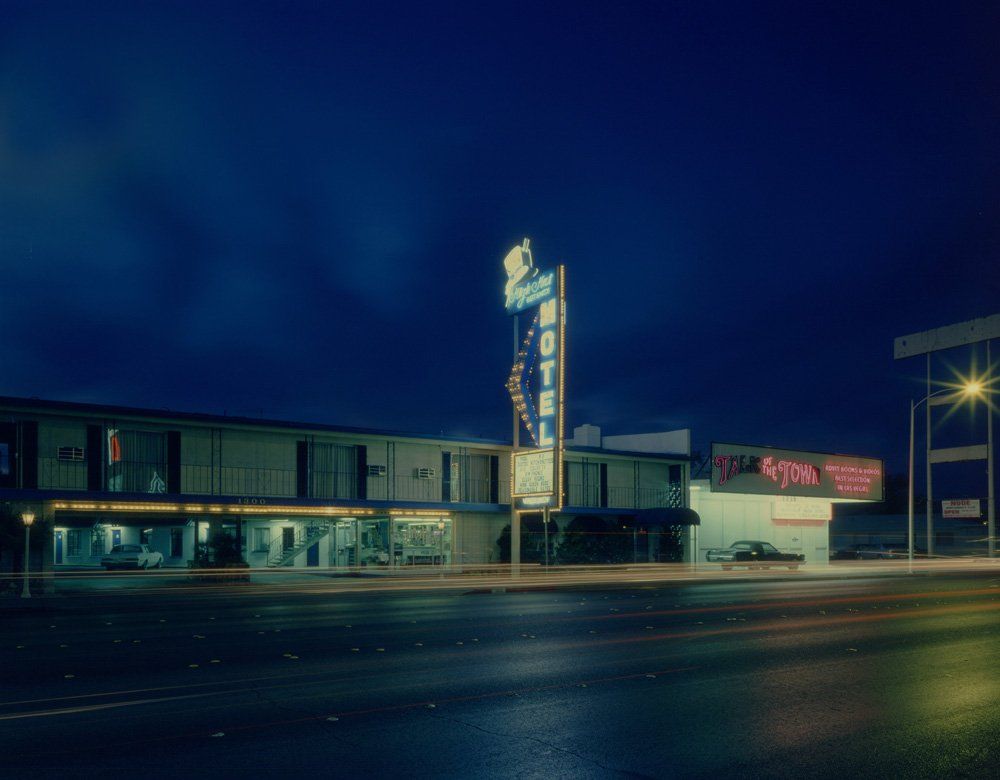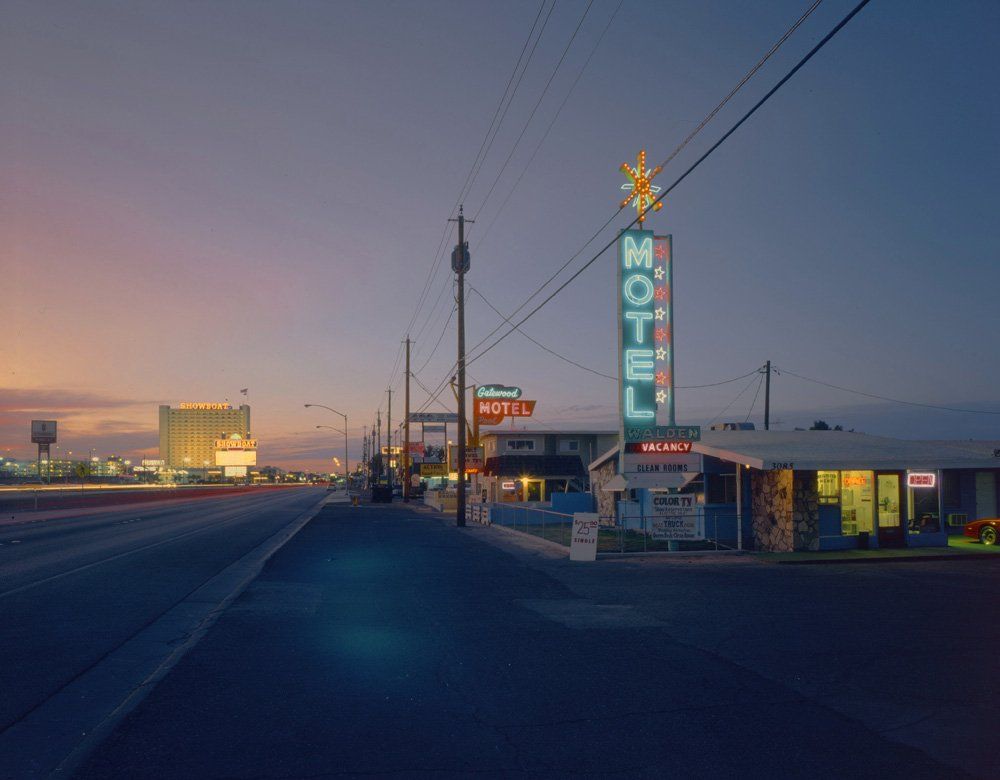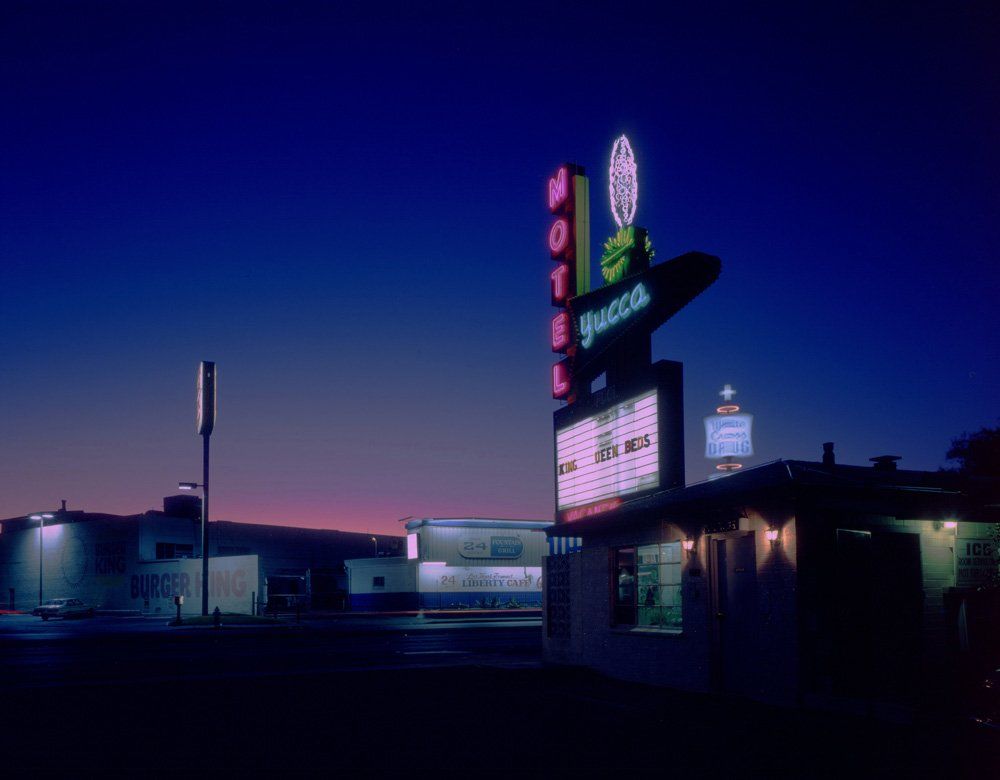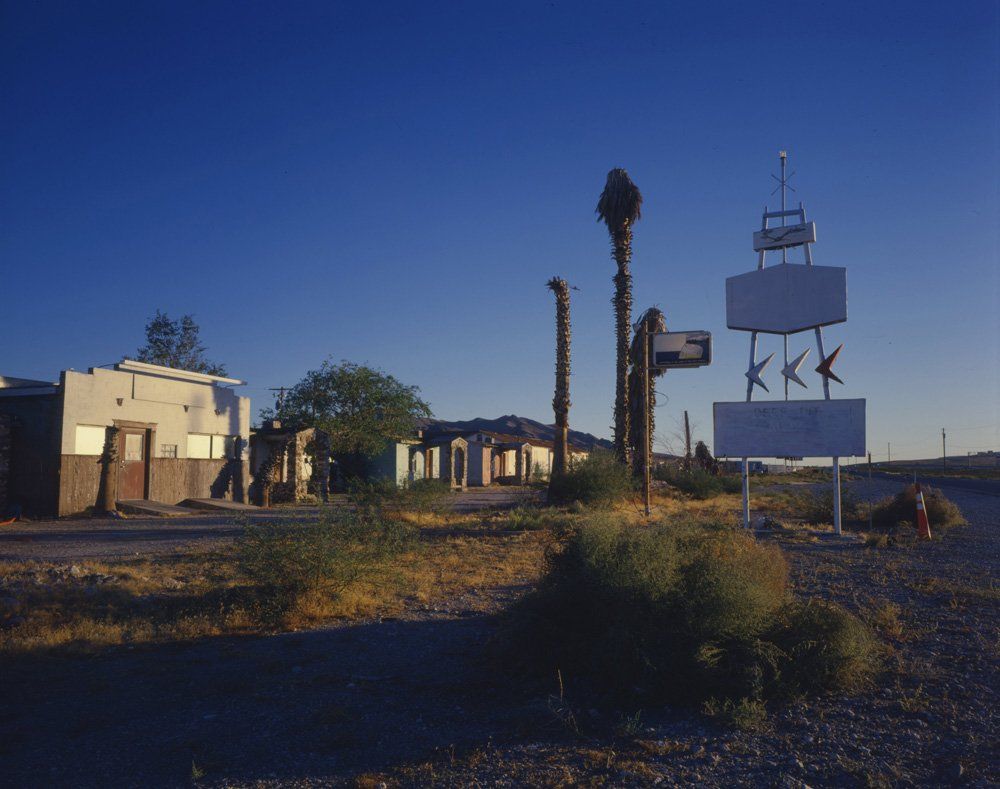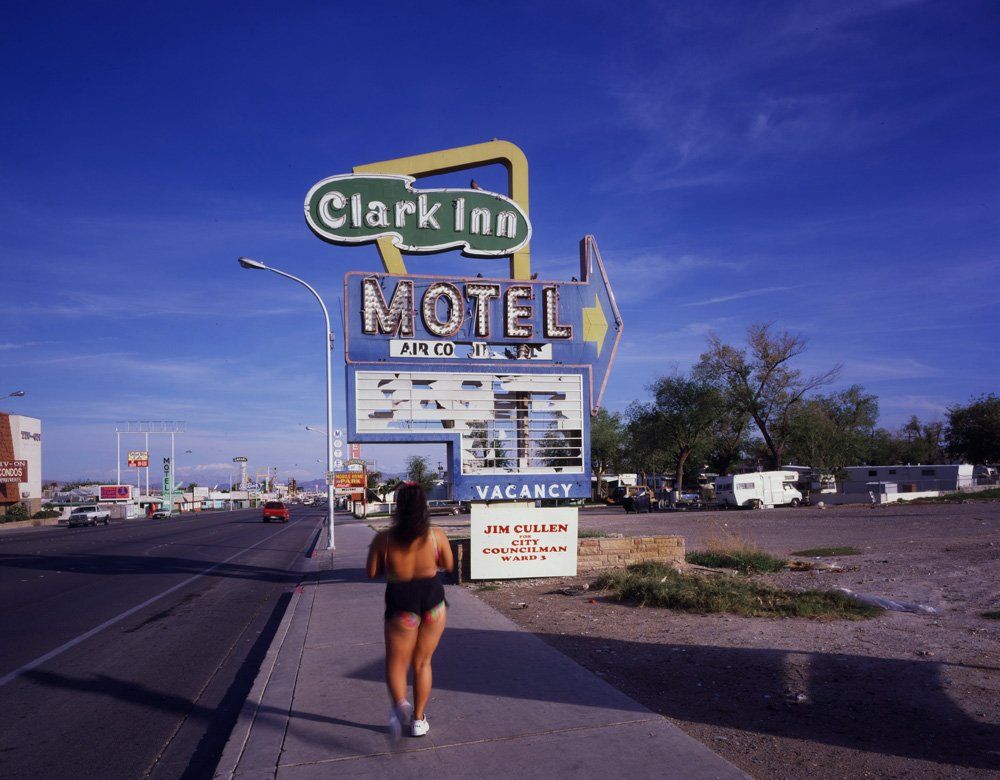Motel Vegas
The icons of American pilgrimage are the automobile, the highway, the motel and the motel sign.
Historically these elements have embodied the essential beliefs in the freedom of movement from place to place, often without a destination. This is the American independence: tooling down the highway in a convertible sports car, listening to the radio, passing greyhound buses, and stopping at roadside motels whose neon signs against the nighttime sky guide the motorist to a night's rest.
Gallery
It started over craps at the Horseshoe in downtown Las Vegas. New York art dealer Ivan Karp and I were rolling the dice, when he suggested we take a break. "Let's take a stroll down Fremont Street." Ivan was an avid gambler. He was also THE promoter and dealer of American Pop Art, having already launched the career of Andy Warhol. Signage is an important marker in Pop Art. Downtown Fremont Street...as well as the entire valley of Las Vegas, is a world center of signage. Think The Las Vegas Strip, neon and the Young Sign Company.
The evening ended with Ivan offering me a commission to photograph all of the motel signs in Las Vegas. This was in 1995. The large format Cibachrome prints made from 4x5" Fujichromes (125 total transparencies) were finally exhibited at OK Harris Works of Art in New York in 1996.
The evening ended with Ivan offering me a commission to photograph all of the motel signs in Las Vegas. This was in 1995. The large format Cibachrome prints made from 4x5" Fujichromes (125 total transparencies) were finally exhibited at OK Harris Works of Art in New York in 1996.
Field Notes
Our memories tend to be tainted by nostalgia and sentimentality. The thought of a Greyhound bus station for many people, however, conjures up an image of the dispossessed, even the homeless. There is nothing romantic nor nostalgic in their need to hit the road or to get out of town. Motels were once called motor courts, built as small individual bungalows with carports, a sort of home away from home. Now, like a bus station, the small, non-franchised motel is a place which charges a weekly rate for the transient laborer or the down and out. The motel is a place for seedy affairs in rundown rooms with waterbeds and adult movies. But, I suppose, even that can be romantic.
In the film Leaving Las Vegas
we see a suicidal alcoholic and his prostitute companion spending the weekend together in a desert motel discovering or denying their love for one another. It is a scene of two pathetic people who escape the misery of their lives in a rundown anonymous motel. In the background, against a blazing sky of sunset colors, stands the neon sign of the motel.
Motels in Las Vegas, like many of those throughout America, are designed to offer the comforts of home while the neon signs suggest to travelers and motorists they are somewhere other than there. The iconography of the motel sign is a reconstruction of a cultural memory and an association of the imagination.
Las Vegas motels offer reminders of the old West made up of cowboys and Indians. Some recall other images of the West from 1960s television shows such as Bonanaza. For those who imagine Western nights filled with the cries of coyotes in the glow of a campfire there are motels such as the Desert Moon, the Desert Star, the Star Motel, and the Starlight. Combining images of the desert sky and the cowboy, there is the Sky Ranch Motel. And for those who have a different memory of desert light, there was the White Sands Motel. One of the most famous of all the motels on Fremont Street, the Blue Angel, we see symbolized higher celestial powers.
As might be expected in Las Vegas, there are plenty of motels that referred to gambling and games of chance. These mirror the cultural landscape of Southern Nevada.
Motels have a negative image to overcome, especially in Las Vegas which has many opulent hotels and resorts. In order to project an appearance competitive with such luxury and exclusivity there are the Gatewood and the High Hat Regency. And for those who wish to escape into a world of seclusion there is the Gateway and the Walden.
Blackjack Motel
When I went into the office to ask permission to photograph the sign, the desk clerk proudly came out to tell me of its history. He explained why the sign was not turned on at night, for I had asked him if he could do so. "There are electric bills to pay," he said and in a motel which caters to weekly and monthly tenants, why advertise to the passing tourists on Boulder Highway anyway? Most of the people driving by were either on the way to the Showboat, which is long gone, or some downtown destination such as the more luxurious Golden Nugget. This part of Fremont Street, and by extension the rest of Boulder Highway, does not appeal to most travelers needing a room for a night or two while they gamble in nearby casinos. Besides, rooms in the hotel's are often just as inexpensive. Motels have nothing but room rates to determine their success; they do not have gambling or buffets. The people who stay at the Black Jack Motel or more likely to be construction workers, prostitutes or transients.
Motels in Las Vegas, like many of those throughout America, are designed to offer the comforts of home while the neon signs suggest to travelers and motorists they are somewhere other than there. The iconography of the motel sign is a reconstruction of a cultural memory and an association of the imagination.
Las Vegas motels offer reminders of the old West made up of cowboys and Indians. Some recall other images of the West from 1960s television shows such as Bonanaza. For those who imagine Western nights filled with the cries of coyotes in the glow of a campfire there are motels such as the Desert Moon, the Desert Star, the Star Motel, and the Starlight. Combining images of the desert sky and the cowboy, there is the Sky Ranch Motel. And for those who have a different memory of desert light, there was the White Sands Motel. One of the most famous of all the motels on Fremont Street, the Blue Angel, we see symbolized higher celestial powers.
As might be expected in Las Vegas, there are plenty of motels that referred to gambling and games of chance. These mirror the cultural landscape of Southern Nevada.
Motels have a negative image to overcome, especially in Las Vegas which has many opulent hotels and resorts. In order to project an appearance competitive with such luxury and exclusivity there are the Gatewood and the High Hat Regency. And for those who wish to escape into a world of seclusion there is the Gateway and the Walden.
Blackjack Motel
When I went into the office to ask permission to photograph the sign, the desk clerk proudly came out to tell me of its history. He explained why the sign was not turned on at night, for I had asked him if he could do so. "There are electric bills to pay," he said and in a motel which caters to weekly and monthly tenants, why advertise to the passing tourists on Boulder Highway anyway? Most of the people driving by were either on the way to the Showboat, which is long gone, or some downtown destination such as the more luxurious Golden Nugget. This part of Fremont Street, and by extension the rest of Boulder Highway, does not appeal to most travelers needing a room for a night or two while they gamble in nearby casinos. Besides, rooms in the hotel's are often just as inexpensive. Motels have nothing but room rates to determine their success; they do not have gambling or buffets. The people who stay at the Black Jack Motel or more likely to be construction workers, prostitutes or transients.
Bibliography
The Motel in America. Jakle, John A., Jefferson S. Rogers, and Keith A. Sculle. (Baltimore: Johns Hopkins University Press). 1996.
Motel Vegas
Smallworks Press Promo Video
"Las Vegas glamour. Vegas was a wonderland, and the faithful who flocked to it needed accommodation. Motel signs were a way of meeting the humdrum necessity of providing shelter without breaking the spell of the magically boozy kingdom of the Rat Pack. The essential element in this was neon: the light of pure promise (‘VACANCY’) that, if all else failed, could be filled or underwritten by naked guarantee (‘STRIPPERS’)."
Geoff Dyer / from his review of the book Motel Vegas, titled Vegas dreamtime.


